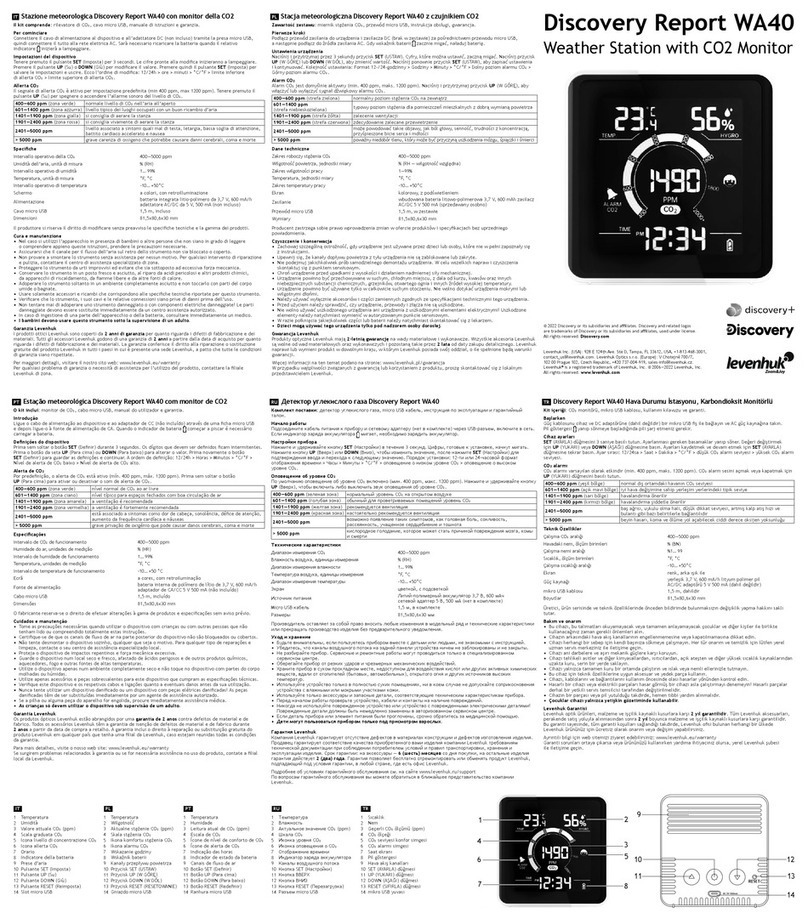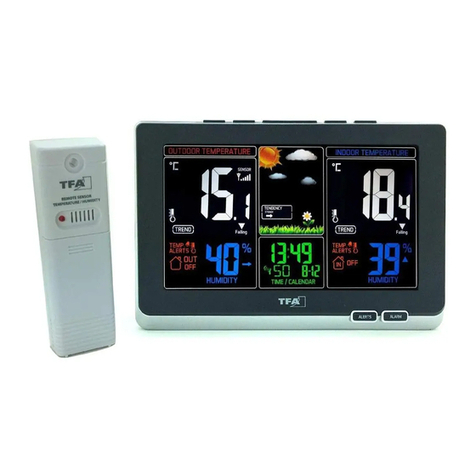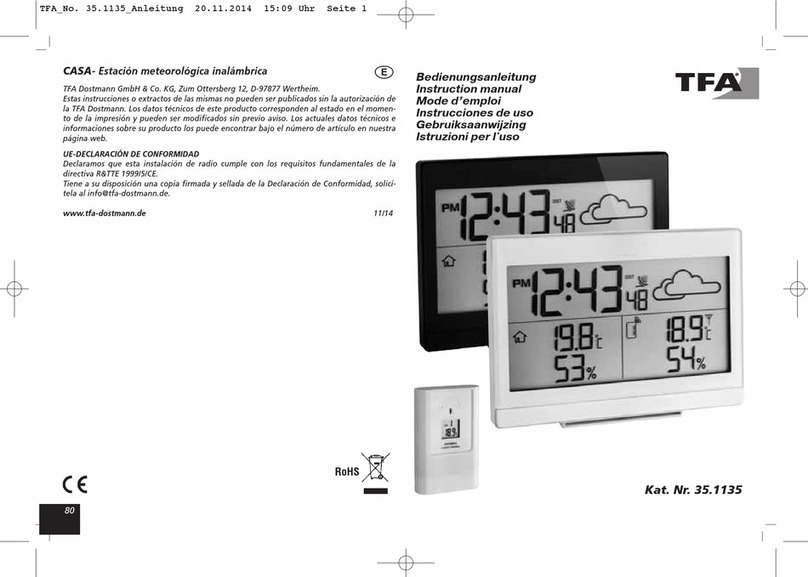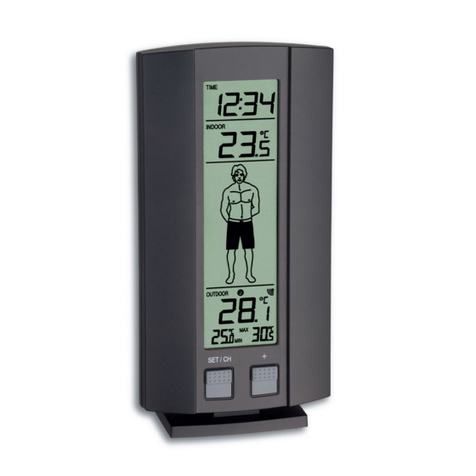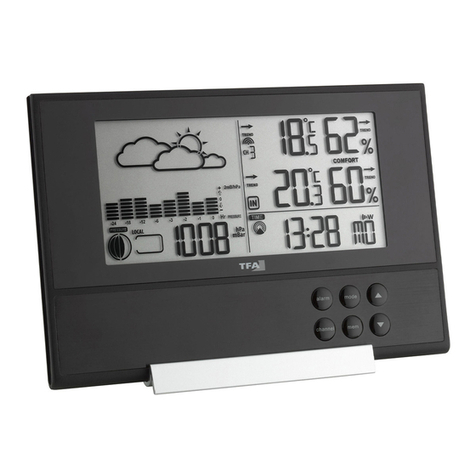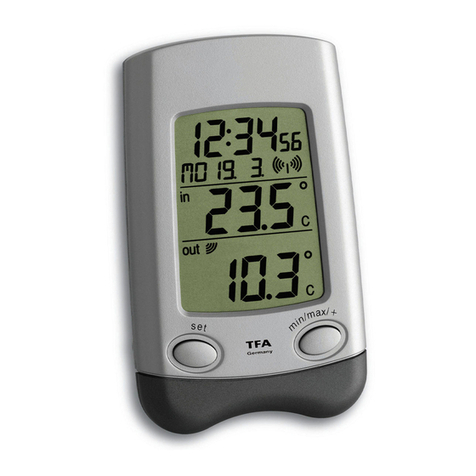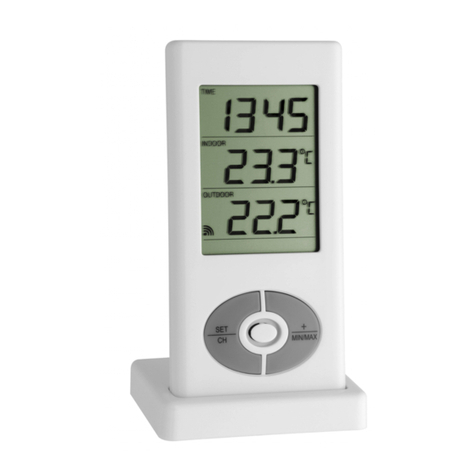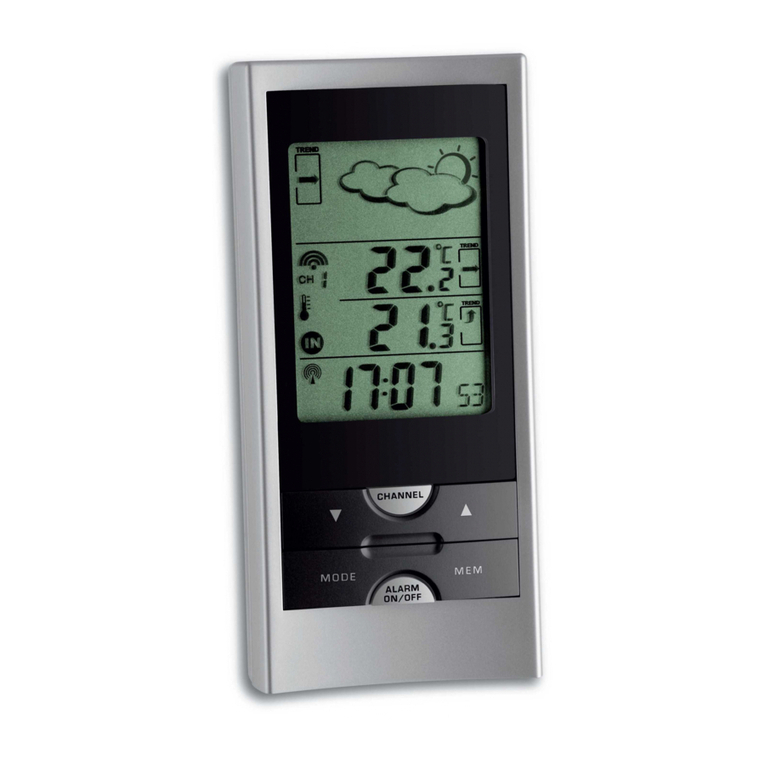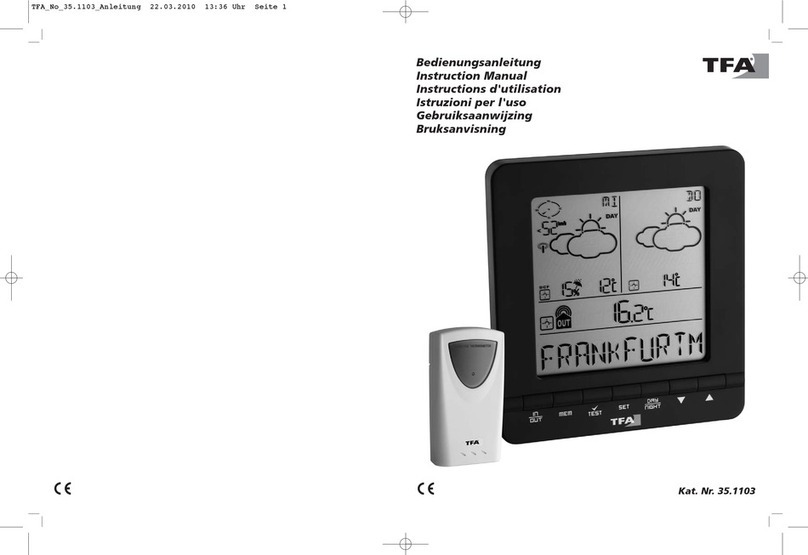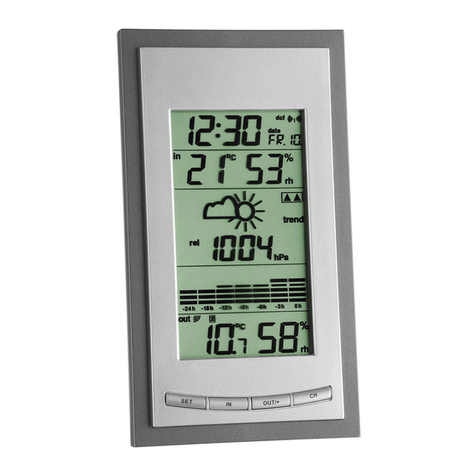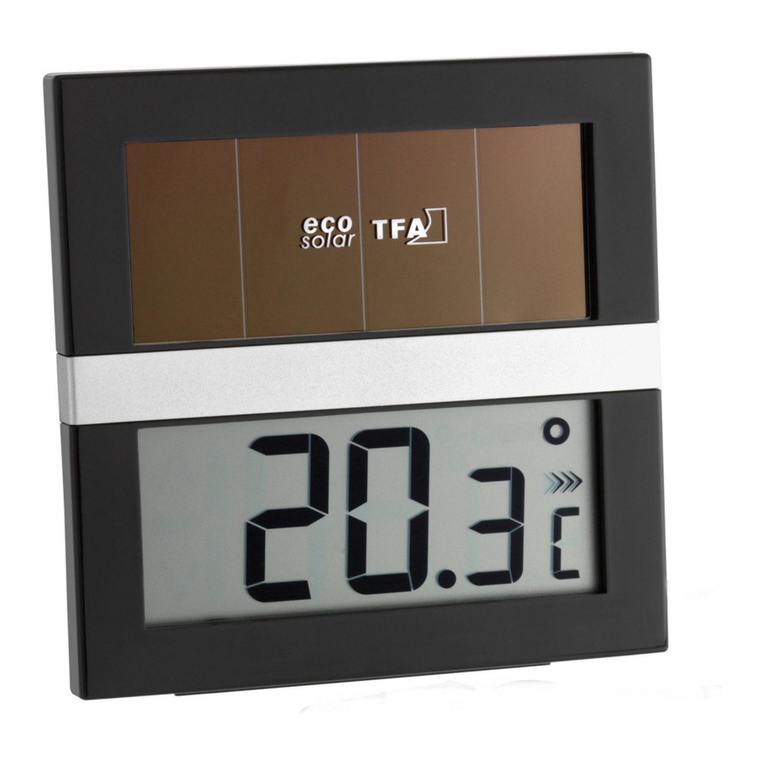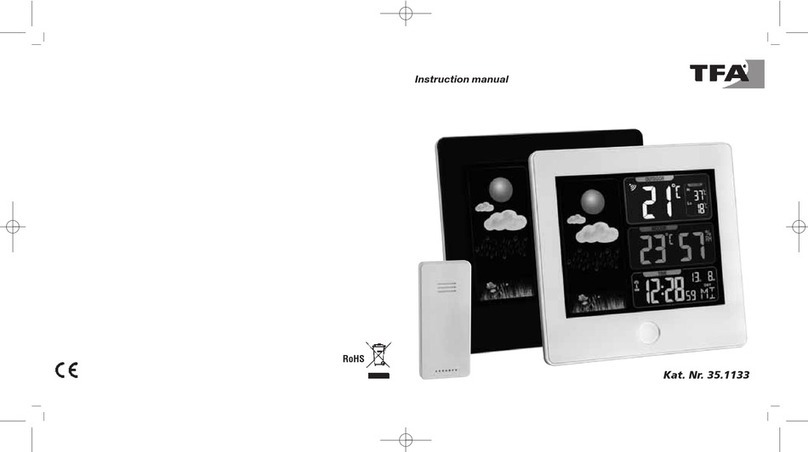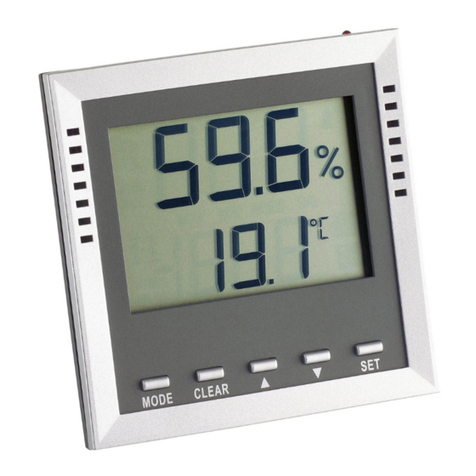
POSITIONING THE OUTDOOR TEMPERATURE TRANSMITTER
The Temperature Transmitter is supplied with a holder that
maybe attached to awall with the three screwssupplied.
Before securing the transmitter, ensure that the 433MHz
signal(outdoor temperature readings) is properlyreceived.
To attach to the wall, please followthe stepsbelow:
1. Markthe wall using a pen through the holes in the
holder to obtain the exact drilling position.
2. Drill holes in the wall at the points marked.
3. Screwholder onto wall.
There is also double sided tape included with the wallmount. On smooth surfaces
this can be used instead of drilling holes. The mounting surface can,however,
affect the transmission range. If for example the unit isattached to apiece of metal,
it maythen either reduce or increase the transmitting range. For thisreason, we
recommend notplacing the unit on anymetal surfacesor in anyposition where a
large metal or highlypolished surface is in the immediate proximity(garage doors,
double glazing,etc.). Choose a sheltered place. Avoid direct rain and sunshine.
Before securing in place, please ensure that the Weather station can receive the
433MHzsignal from the Temperature transmitter at the positions that you wish to
situate them.
The Temperature Transmitter simplyclicks in or out ofthe holder. When inserting or
removing the Temperature Transmitter from the wall holder please hold both units
securely.
CARE AND MAINTENANCE:
•Extreme temperatures,vibration and shockshouldbe avoided asthese may
cause damage to the unit and give inaccurate forecasts and readings.
•When cleaning the displaysand casings, use a soft damp cloth only.Do not
use solvents or scouring agentsas theymaymarkthe LCD and casing.
•Do not submerge the unit inwater.
•Immediatelyremove all low powered batteriesto avoid leakage and damage.
Replace onlywith new batteriesof the recommended type.
•Do not make anyrepair attemptsto the unit.Return it to its original point of
purchase for repair byaqualified engineer. Opening and tampering with the
unit mayinvalidate its guarantee.
•Do not expose the unit to extreme and sudden temperature changes, this
maylead to rapid changes in forecasts and readingsand therebyreduce its
accuracy.
SPECIFICATIONS:
Temperature measuring range
Indoor : -9.9ºC to +59.9ºC with 0.1ºC resolution
(“OF.L” displayed if outside thisrange)
Outdoor : -29.9ºCto +69.9ºC with 0.1ºC
resolution
(“OFL” displayed if outside this range)
Indoor relative humiditymeasuring range: 20% to 95% with 1% resolution
(“- -” displayed ifoutside this range)
Indoor Temperature checking interval : every10 seconds
Indoor Humiditychecking interval : every20 seconds
Outdoor Temperature reception : every5 minutes
Power Supply:
Weather Station : 2 xAA, IEC LR6, 1.5V
Temperature Transmitter : 2 xAAA, IECLR3, 1.5V
Batterylife cycle : approximately12 months
(Alkaline batteries recommended)
Dimensions (L x WxH)
Weather Station (without stand) : 102 x36 x 172 mm
Temperature Transmitter (without holder): 40 x 22 x128 mm
LIABILITY DISCLAIMER:
•The manufacturer and supplier cannot accept anyresponsibilityfor any
incorrect readings and anyconsequences that occur should an inaccurate
reading takeplace.
•This product isnot to be used for medical purposes or for public information.
•This product isonlydesigned to be used in the home asindication of the
future weather and is not 100% accurate. Weather forecasts given bythis
product should be taken onlyas an indication and not asbeing totally
accurate.
•The specifications of this product maychange without prior notice.
•This product isnot a toy.Keep outof the reach ofchildren.
•No partof this manual maybe reproduced without written consent of the
manufacturer.
R&TTE Directive 1999/5/EC
Summary of the Declaration of Conformity: We herebydeclare that this wireless transmission
device does comply with the essentialrequirements of R&TTE Directive 1999/5/EC.

